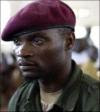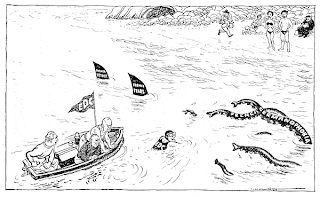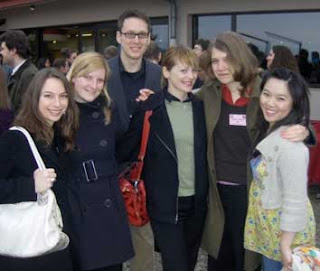 Tomorrow, Monday, June 1, Pre-Trial Chamber II of the International Criminal Court will hear argument on a defense motion in Prosecutor v. Germain Katanga and Mathieu Ngudjolo Chui, challenging the admissibility of the proceedings against defendant Katanga (right) on the ground that the proceedings violate the principle of complementarity. The complementarity principle is set forth in Article 17(1) of the Rome Statute, which states that a case is inadmissible if it
Tomorrow, Monday, June 1, Pre-Trial Chamber II of the International Criminal Court will hear argument on a defense motion in Prosecutor v. Germain Katanga and Mathieu Ngudjolo Chui, challenging the admissibility of the proceedings against defendant Katanga (right) on the ground that the proceedings violate the principle of complementarity. The complementarity principle is set forth in Article 17(1) of the Rome Statute, which states that a case is inadmissible if it is being investigated or prosecuted by a State which has jurisdiction over it, unless the State is unwilling or unable genuinely to carry out the investigation or prosecution.
Katanga, alleged commander of the Patriotic Resistance Force in Ituri, and Ngudjolo, alleged leader of the Nationalist Integrationist Front, have been charged with war crimes and crimes against humanity arising largely from their forces’ joint attack on the village of Bogoro, in northeastern Democratic Republic of the Congo, on February 24, 2003. During the attack, the defendants’ forces allegedly intended to annihilate the village’s civilian population in order to gain control of a key transit route. Charged crimes include the murder of nearly 200 civilians, sexual enslavement of women and girls, and conscription of child soldiers.
The February 10, 2009, defense motion (a redacted version of which was made public on March 11), Katanga’s counsel distinguished the ICC from the International Criminal Tribunals for Rwanda and the former Yugoslavia by asserting that, unlike those ad hoc tribunals, the ICC has a subsidiary role that is triggered only when national investigations fail to occur or are somehow “defective.” The submission outlines state concerns, expressed during the negotiations leading to the Rome Statute, that ICC proceedings could infringe upon national sovereignty and argues that the Court’s current practice has only justified those fears by asserting "nothing less than primacy of the ICC over national courts."
The defense motion noted that, at the time Katanga’s arrest warrant was issued, he was being prosecuted in the DRC for identical charges — crimes against humanity in Bogoro — and his case is thus inadmissible under Article 17.
While distinguishing its case from that of another DRC defendant currently on trial, Thomas Lubanga, the defense criticized the iCC’s treatment of complementarity in that case. Specifically, in Prosecutor v. Thomas Lubanga Dyilo, Pre-Trial Chamber I upheld the arrest warrant against the defendant despite his investigation by DRC authorities, on the ground that the national investigation focused on crimes other than those charged by the ICC’s Office of the Prosecutor. The Katanga defense criticized this "same-conduct test," which was applied subsequently in the decisions reviewing the arrest warrants of Katanga, of his co-defendant Ngudjolo, and, in the matter regarding Darfur, Sudan, of Ali Kushayb, on a variety of grounds:
► The scope of inquiry regarding the conduct at issue is unsettled, the defense argued, adding that this leaves parties to question the factual inquiry that pre-trial chambers employ in determining whether the conduct investigated by national authorities is similar to that investigated by the prosecution.
► The "same-conduct test" is tantamount to ICC primacy, and thus subverts the principle of complementarity, the defense further argued. It reasoned that the decision whether to deploy scarce national resources vis-à-vis broad international crimes necessarily entails some degree of selection at the domestic level, and this fact opens the door for international prosecutors to assert ICC jurisdiction on the basis of little more than resource gaps or national prosecutorial discretion. Scholars such as William A. Schabas have criticized the ICC's interpretation of complementarity.
The defense proposed that rather than applying the "same-conduct test," the ICC should apply 1 or both of the following when considering the admissibility of a case for complementarity purposes:
► A "comparative-gravity test," which holds that when the need for investigation “significantly exceeds” that undertaken by a national authority, a case may be deemed admissible by the ICC.
► A "comprehensive-conduct test,: which holds that when the factual basis of an international investigation "is significantly more comprehensive" than that of a domestic prosecutor, a case likewise may be admissible.
 The defense argued, however, that even under the "same-conduct test" Katanga’s case is inadmissible given that he was charged with crimes against humanity arising out of the attack on Bogoro, and there is no evidence that the DRC is unwilling or unable to pursue a corresponding investigation and possible prosecution.
The defense argued, however, that even under the "same-conduct test" Katanga’s case is inadmissible given that he was charged with crimes against humanity arising out of the attack on Bogoro, and there is no evidence that the DRC is unwilling or unable to pursue a corresponding investigation and possible prosecution.The hearing will be available on livestream webcast here. It is scheduled to begin at 9:30 a.m. (3:30 a.m. Eastern time) Monday at the ICC courthouse at The Hague (left).
















































